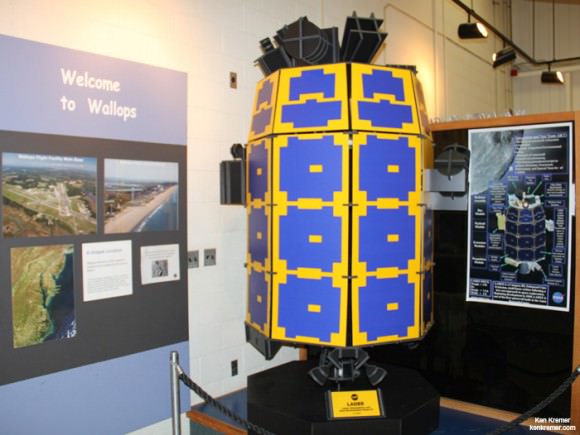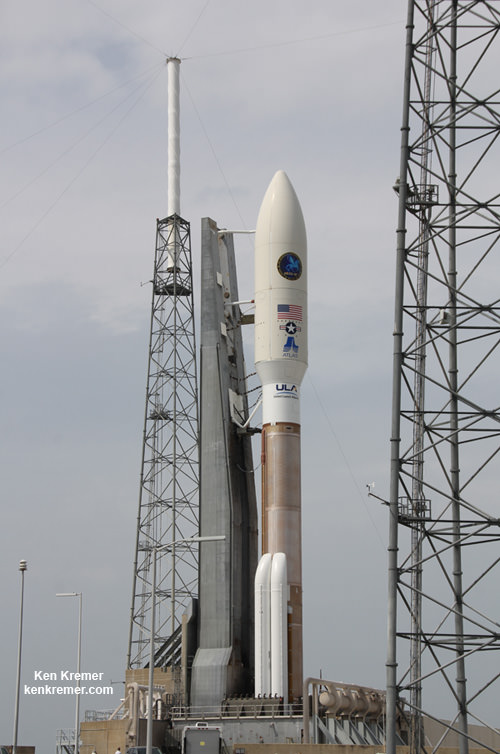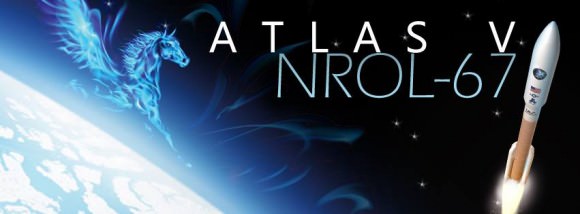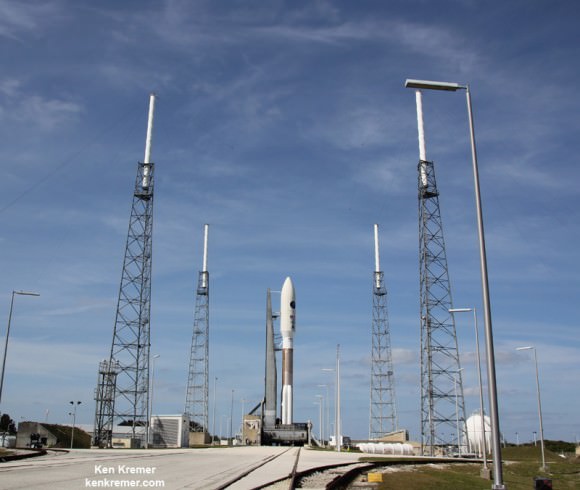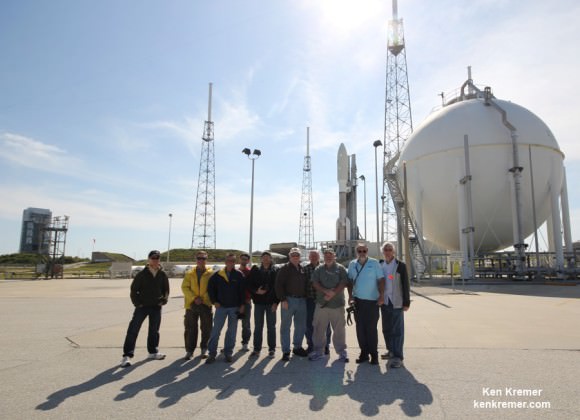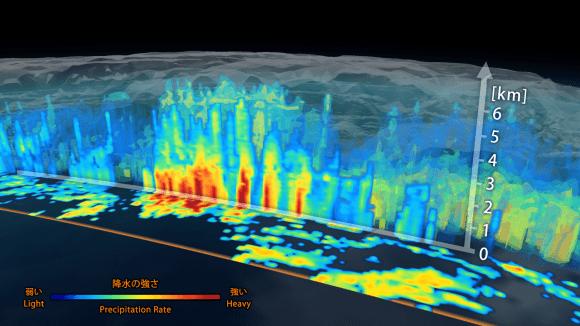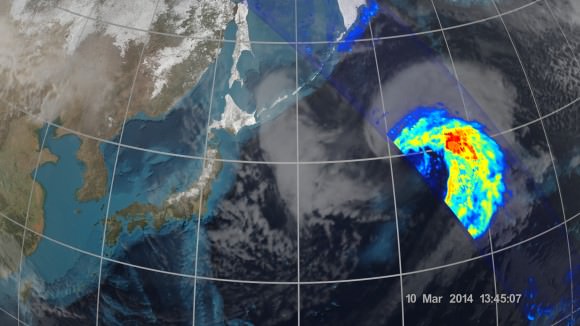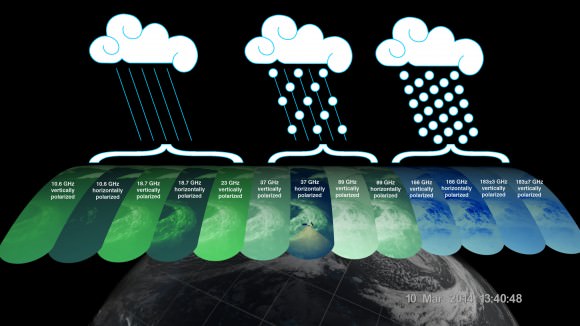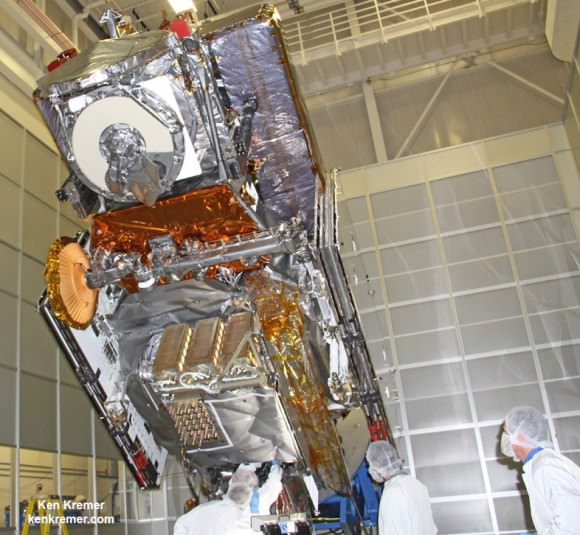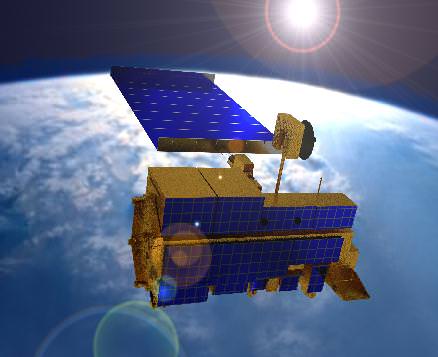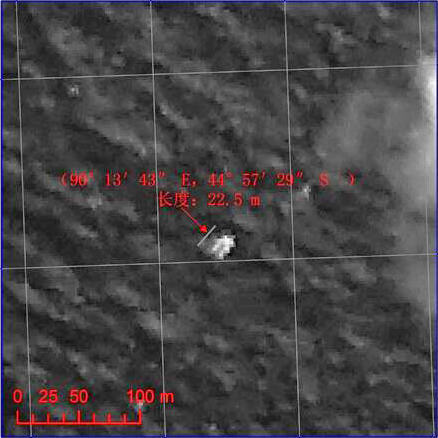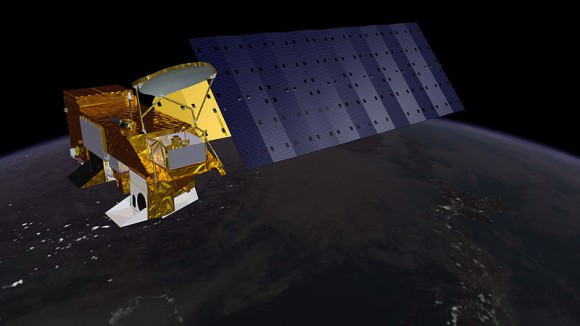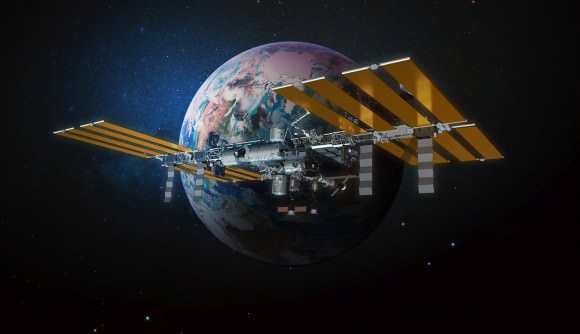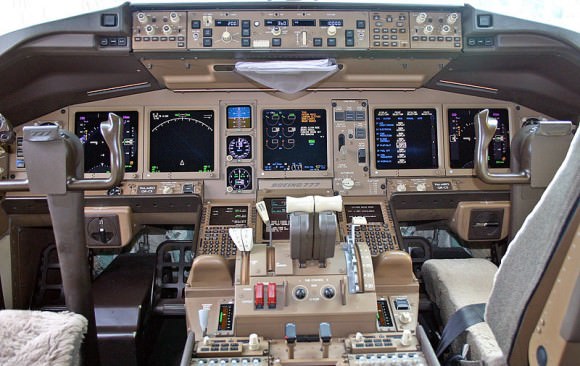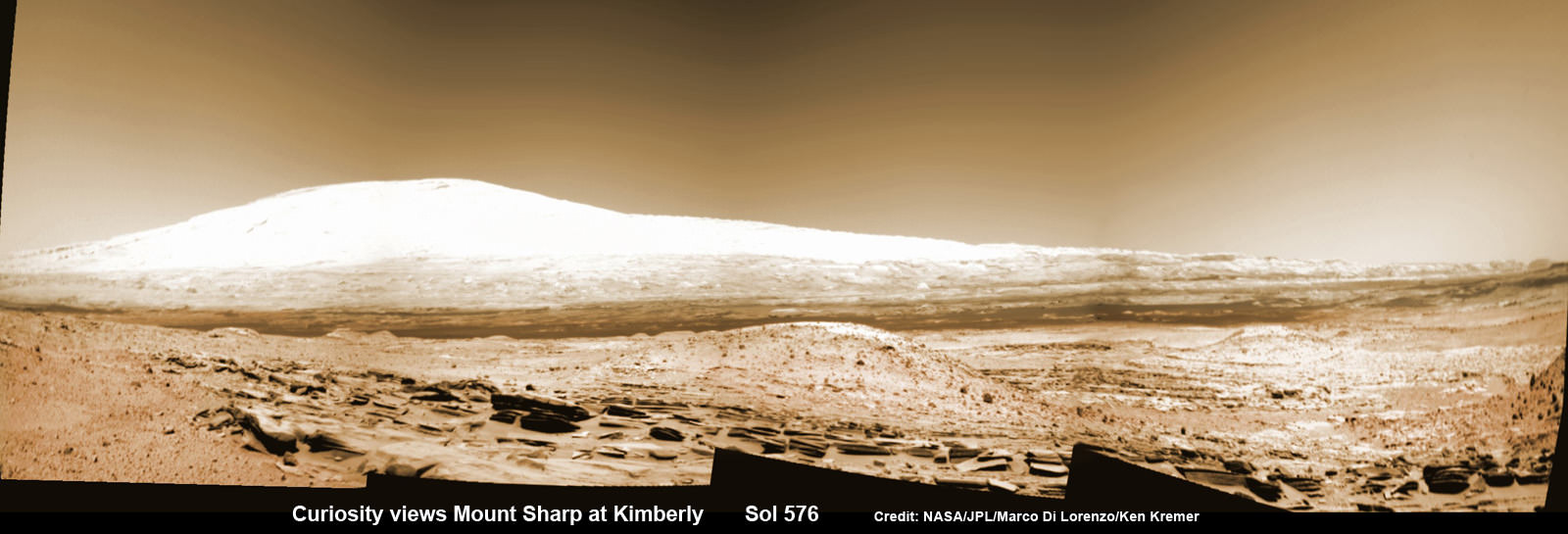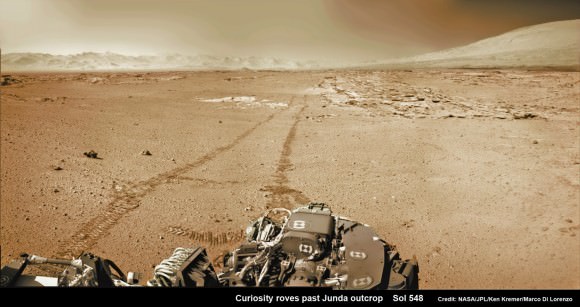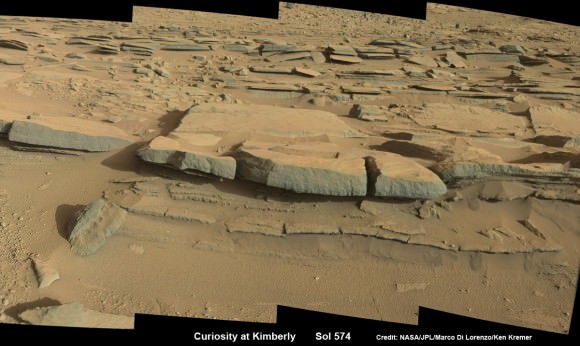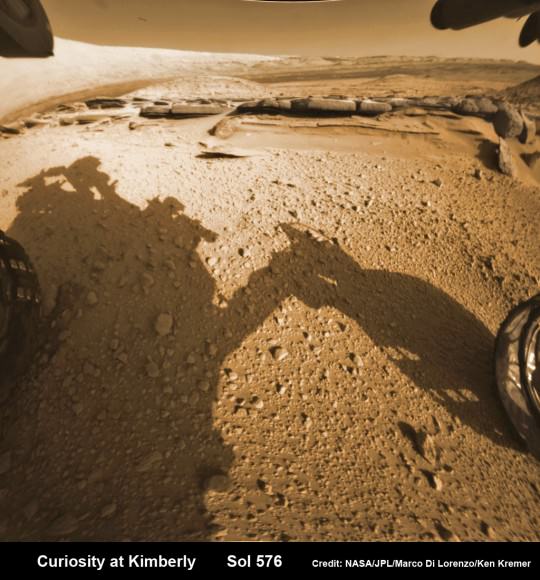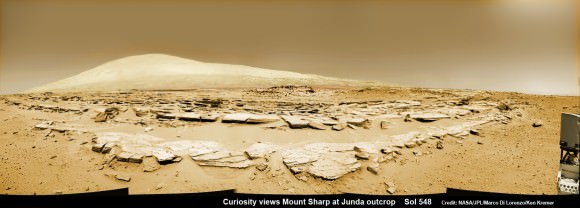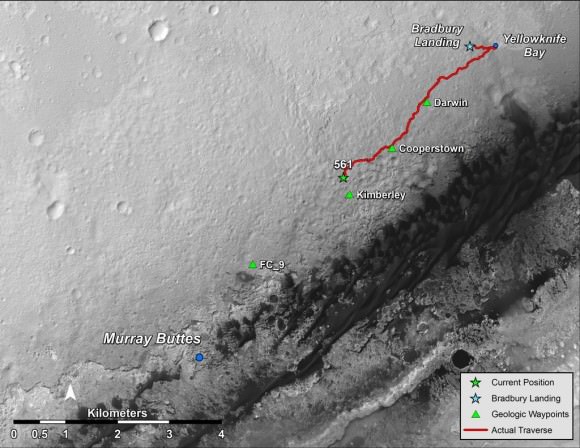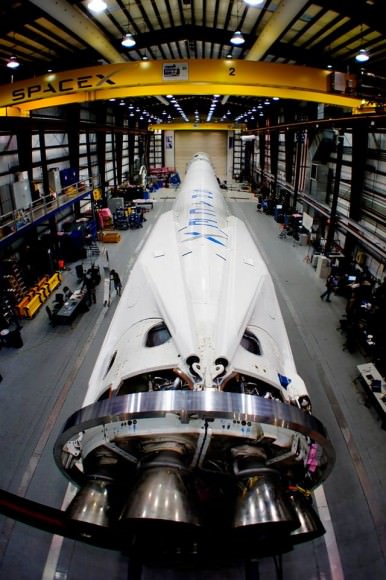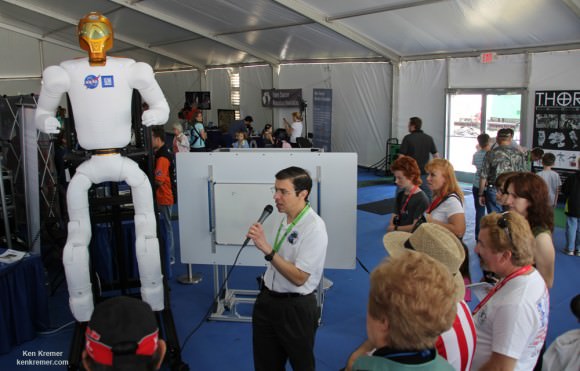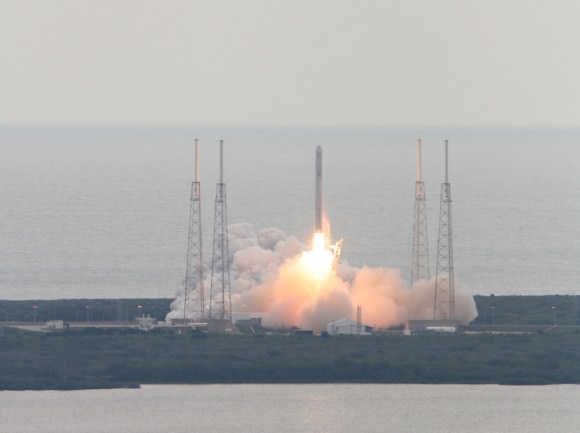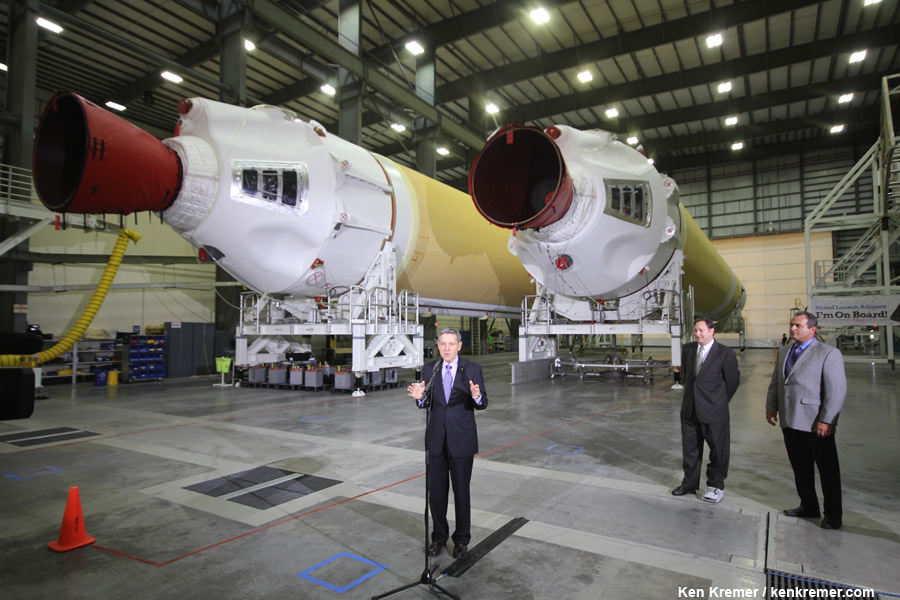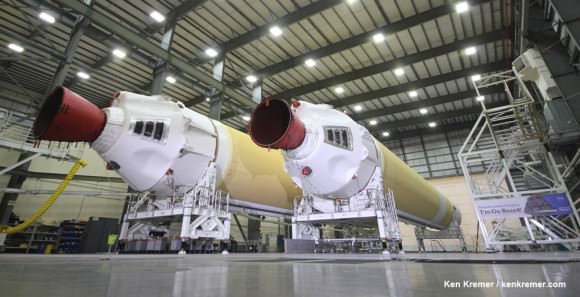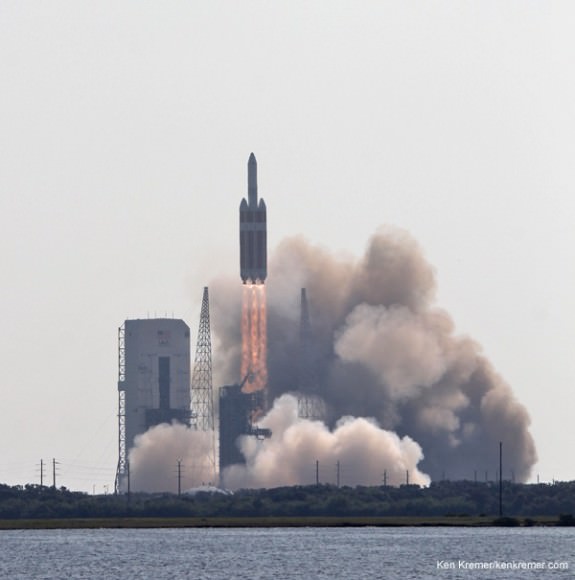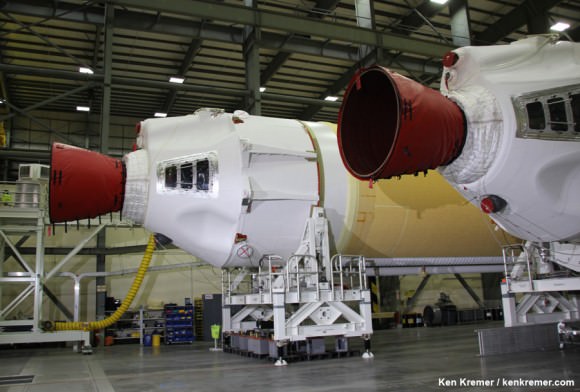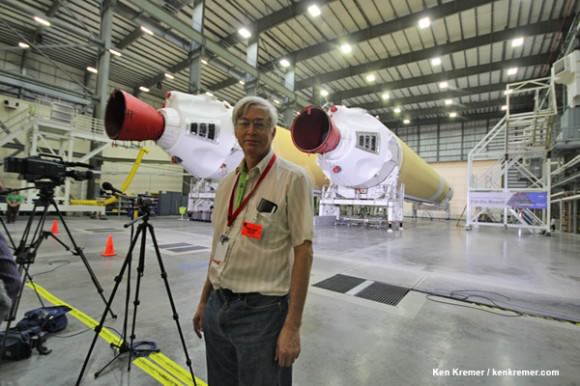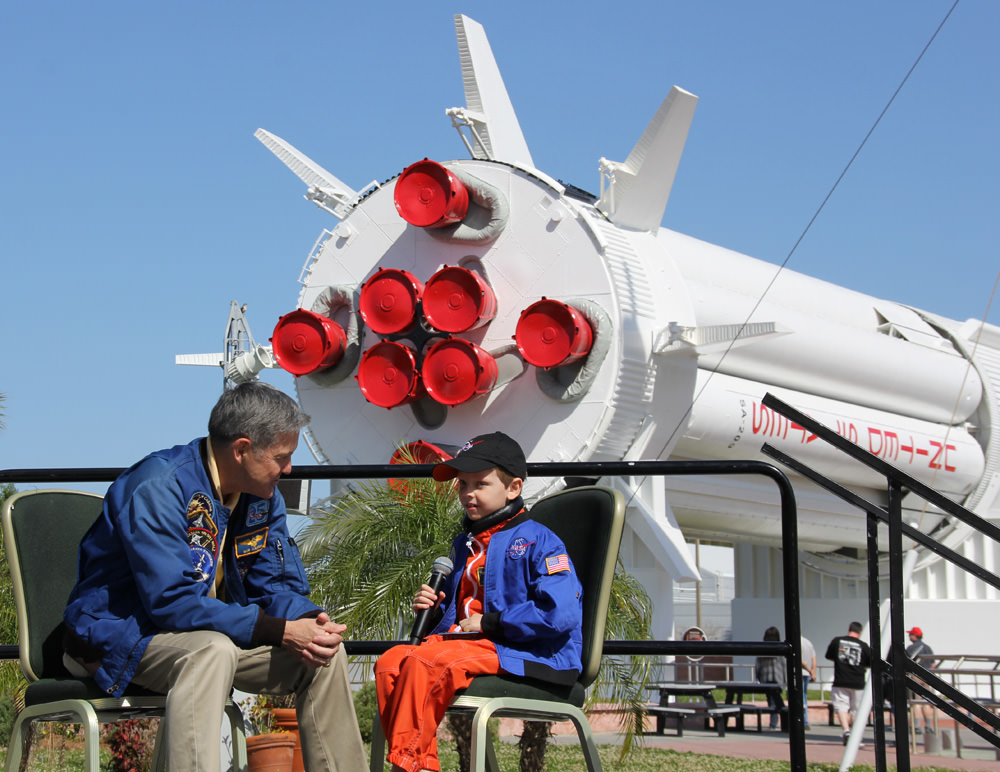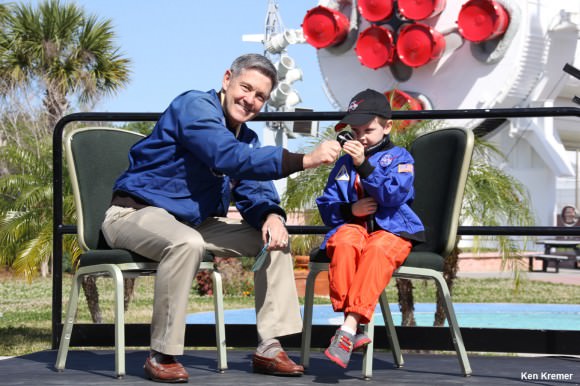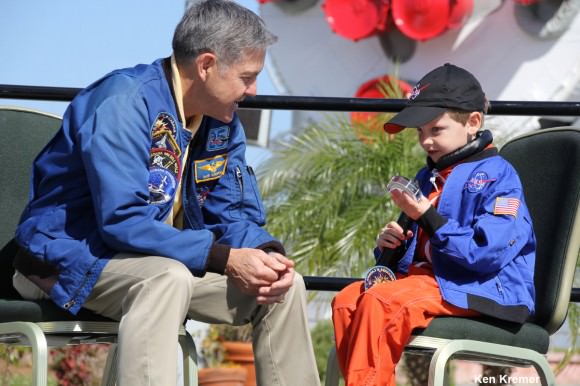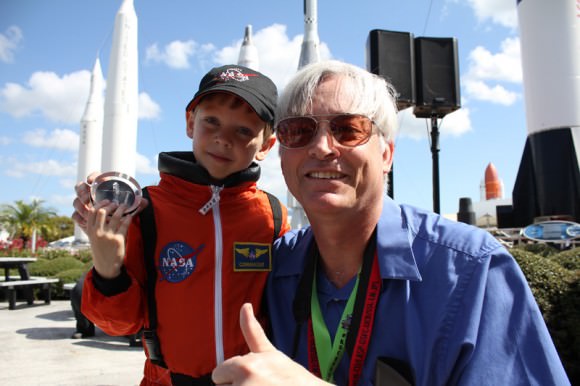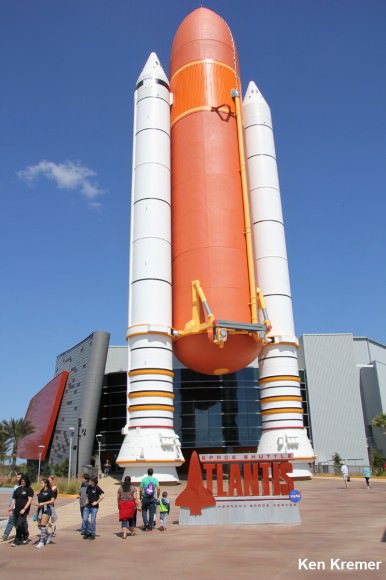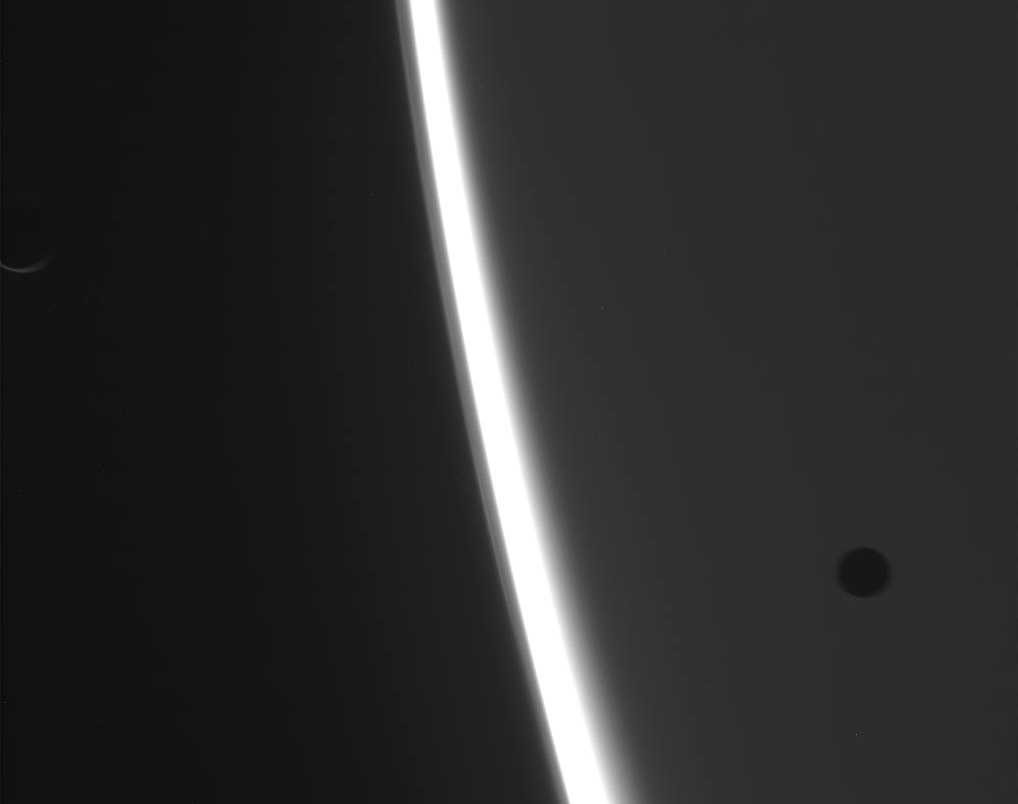You can enter NASA’s ‘Take the Plunge’ contest and guess LADEE’s impending lunar impact date, expected on or before April 21, 2014. Credit: NASA
Contest entry details below – deadline soon[/caption]
When will LADEE hit the Moon for its looming end of mission finale?
NASA’s resoundingly successful LADEE lunar dust exploring mission is nearly out of gas – and needs your help, now!
With its inevitable doom approaching, NASA needs you to summon your thoughts and is challenging you to participate in a ‘Take the Plunge’ contest – figuratively not literally – and guess LADEE’s impending impact date.
LADEE, which stand for Lunar Atmosphere and Dust Environment Explorer, will smack violently into the Moon and scatter into zillions of bits and pieces sometime in the next two and a half weeks, on or before about April 21.
But exactly when will it impact the lunar surface? NASA wants to hear your best guess!
The ‘Take the Plunge’ contest was announced by NASA today, April 4, at a media briefing.
For more information about the challenge and how to enter, visit: http://socialforms.nasa.gov/ladee
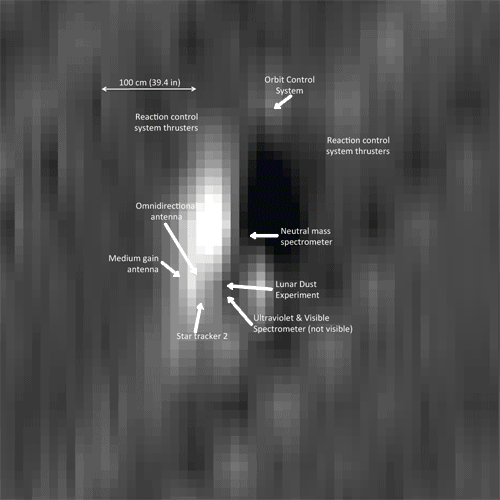
Between now and its inevitable doom, mission controllers will command LADEE to continue gathering groundbreaking science.
And it will do so at an even lower attitude that it orbits today by firing its orbit maneuvering thrusters tonight and this weekend.
The couch sized probe seeks to eek out every last smidgeon of data about the Moons ultra tenuous dust and atmospheric environment from an ultra low altitude just a few miles (km) above the pockmarked lunar surface.
But because the moon’s gravity field is so uneven, the probes thrusters must be frequently fired to keep it on course and prevent premature crashes.
“The moon’s gravity field is so lumpy, and the terrain is so highly variable with crater ridges and valleys that frequent maneuvers are required or the LADEE spacecraft will impact the moon’s surface,” said Butler Hine, LADEE project manager at Ames.
“Even if we perform all maneuvers perfectly, there’s still a chance LADEE could impact the moon sometime before April 21, which is when we expect LADEE’s orbit to naturally decay after using all the fuel onboard.”
LADEE will fly as low as fly approximately 1 to 2 miles (2 to 3 kilometers) above the surface.
Everyone of all ages is eligible to enter NASA’s “Take the Plunge: LADEE Impact Challenge.”
The submissions deadline is 3 p.m. PDT Friday, April 11.
NASA says that winners post impact. They will receive a commemorative, personalized certificate from the LADEE program via email.
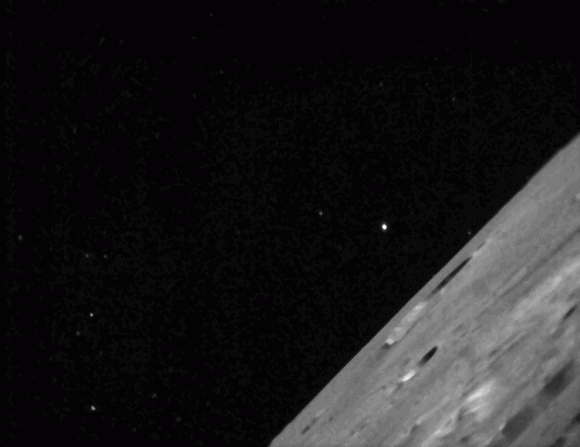
Watch for my upcoming story on LADEE’s science accomplishments and what’s planned for her final days.
LADEE was launched on Sept. 6, 2013 from NASA Wallops in Virginia on a science mission to investigate the composition and properties of the Moon’s pristine and extremely tenuous atmosphere, or exosphere, and untangle the mysteries of its lofted lunar dust dating back to the Apollo Moon landing era.
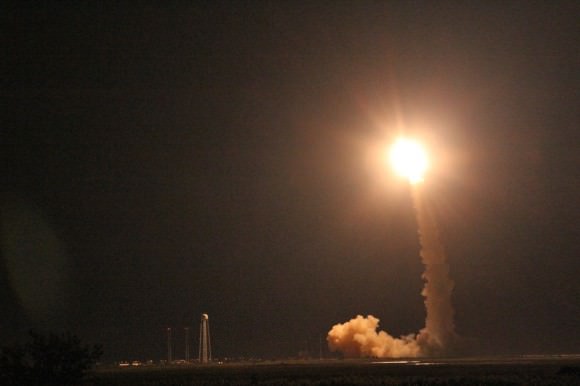
The science mission duration had initially been planned to last approximately 100 days and finish with a final impact on the Moon on about March 24th.
NASA granted LADEE a month long extension since the residual rocket fuel is more than anticipated due to the expertise of LADEE’s navigation engineers and the precision of the launch atop the Orbital Sciences Minotaur V rocket and orbital insertion.
Stay tuned here for Ken’s continuing LADEE, Chang’e-3, Orion, Orbital Sciences, SpaceX, commercial space, Mars rover and more planetary and human spaceflight news.
Learn more at Ken’s upcoming presentations at the NEAF astro/space convention, NY on April 12/13 and at Washington Crossing State Park, NJ on April 6.
